Aeroflot
PJSC Aeroflot – Russian Airlines (Russian: ПАО "Аэрофло́т – Росси́йские авиали́нии", PAO Aeroflot—Rossiyskiye avialinii), commonly known as Aeroflot (English: /ˈɛəroʊˌflɒt/ or /ˌɛəroʊˈflɒt/ (![]()
 | |||||||
| |||||||
| Founded | 3 February 1923 | ||||||
|---|---|---|---|---|---|---|---|
| Commenced operations | 15 July 1923 | ||||||
| Hubs | Sheremetyevo International Airport | ||||||
| Frequent-flyer program | Aeroflot Bonus | ||||||
| Alliance | |||||||
| Subsidiaries | |||||||
| Fleet size | 247 | ||||||
| Destinations | 146 | ||||||
| Traded as | MCX: AFLT | ||||||
| Headquarters | Moscow, Russia | ||||||
| Key people |
| ||||||
| Revenue | |||||||
| Net income | |||||||
| Profit | |||||||
| Employees | 30,328 (Aeroflot Group) | ||||||
| Website | www | ||||||
From its inception to the early 1990s, Aeroflot was the flag carrier and a state-owned enterprise of the Union of Soviet Socialist Republics (USSR/Soviet Union), a predecessor of Russia. During this time, Aeroflot grew its fleet to over five thousand domestically-made aircraft and expanded to operate a domestic and international flight network of over three thousand destinations throughout the Soviet Union and the globe, therefore making the airline the largest in the world at the time.[7][8] In addition to passenger flights, Aeroflot also committed to doing freight operations and serving the state through transportation and military assistance. With the largest fleet comes a large burden, as Aeroflot was involved in numerous accidents and incidents during its operations compared to any other airline.[9] Following the dissolution of the USSR, the carrier was restructured into an open joint-stock company and embarked on a radical transformation process. Aeroflot shrank the fleet dramatically while at the same time purchased Western aircraft and newer domestic models and focused on expanding its international market and later its domestic market.
By the end of 2017, Aeroflot controlled roughly 40% of the air market in Russia.[10] Aeroflot owns Rossiya Airlines – an airline based in Saint Petersburg, Pobeda – a low-cost carrier, and 51% of airline Aurora, based in the Russian Far East. Altogether, Aeroflot and its subsidiaries own 359 aircraft as of 31 December 2019,[11] composed mainly of Airbus, Boeing, and domestic models such as the Sukhoi Superjet 100. Aeroflot also formerly had a cargo subsidiary named Aeroflot-Cargo, though the branch later merged with the parent airline.[12][13]
Aeroflot became a member of SkyTeam in April 2006, making it the first carrier in the former Soviet Union to do so. As of March 2020, the Russian Government owns 51% of Aeroflot through the Federal Agency for State Property Management, with the rest of the shares being free-floating.[14]
History
Early history of Soviet civil aviation
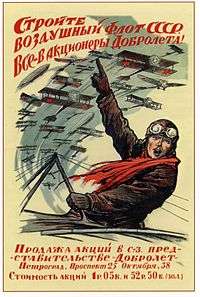
On 17 January 1921, the Sovnarkom of the Russian Soviet Federative Socialist Republic published "About Air Transportation". The document signed by Lenin set out the basic regulations on air transport over the territory of the RSFSR. The document was significant as it was the first time that a Russian state had declared sovereignty over its airspace. In addition, the document defined rules for the operation of foreign aircraft over the Soviet Union's airspace and territory. After Lenin issued an order, a State Commission was formed on 31 January 1921 for the purpose of civil aviation planning in the Soviet Union. As a result of the commission's plans, Glavvozdukhflot (Chief Administration of the Civil Air Fleet) (Russian: Главвоздухфлот (Главное управление воздушного флота)) was established, and it began mail and passenger flights on the Moscow-Oryol-Kursk-Kharkov route on 1 May 1921 using Sikorsky Ilya Muromets aircraft.[15]:1 This was followed by the formation of Deruluft-Deutsch Russische Luftverkehrs A.G. in Berlin on 11 November 1921, as a joint venture between the Soviet Union and Germany. The company, whose aircraft were registered in both Germany and the Soviet Union, began operations on 1 May 1922 with a Fokker F.III flying between Königsberg and Moscow.[15]:2 The service was initially operated twice a week and restricted to the carriage of mail.[15]:2–3
On 3 February 1923 Sovnarkom approved plans for the expansion of the Red Air Fleet, and it is this date which was officially recognised as the beginning of civil aviation in the Soviet Union. After a resolution of the Central Committee of the Communist Party of the Soviet Union, the Enterprise for Friends of the Air Fleet (ODVF) was founded on 8 March 1923, followed by the formation of Dobrolet (Russian: Добролёт) on 17 March 1923. The artist Alexander Rodchenko became involved in the ODVF at this time. He designed posters encouraging citizens to buy stock in Dobrolet and the famous "Winged Hammer and Sickle" logo still used by Aeroflot.[16] Regular flights by Dobrolet from Moscow to Nizhniy Novgorod commenced on 15 July 1923. During the same period, an additional two airlines were established; Zakavia being based in Tiflis, and Ukrvozdukhput based in Kharkov.[15]:2 During 1923 an agreement was signed establishing a subdivision of Dobrolet to be based in Tashkent, which would operate to points in Soviet Central Asia. Services between Tashkent and Alma Ata began on 27 April 1924, and by the end of 1924 the subdivision had carried 480 passengers and 500 kilograms (1,100 lb) of mail and freight, on a total of 210 flights.[15]:6 In March 1924, Dobrolet began operating flights from Sevastopol to Yalta and Yevpatoriya in the Crimea. Dobrolet's route network was extended during the 1925–1927 period to include Kazan and regular flights between Moscow and Kharkov were inaugurated. Plans were made for Dobrolet flights to Kharkov to connect with Ukrvozdukhput services to Kiev, Odessa and Rostov-on-Don. During 1925, Dobrolet operated 2,000 flights over a distance of 1,000,000 kilometres (620,000 mi), carrying 14,000 passengers and 127,500 kilograms (281,100 lb) of freight, on a route network extending to some 5,000 kilometres (3,100 mi).[15]:7 Dobrolet was transformed from a Russian to an all-Union enterprise on 21 September 1926 as a result of Sovnarkom resolutions, and in 1928 Dobrolet was merged with Ukrvozdukhput; the latter having merged with Zakavia in 1925.[15]:6–7
Formative years

Responsibility for all civil aviation activities in the Soviet Union came under the control of the Chief Directorate of the Civil Air Fleet on 25 February 1932, and on 25 March 1932 the name "Aeroflot" was officially adopted for the entire Soviet Civil Air Fleet.[15]:10 The Communist Party of the Soviet Union Congress in 1933 set out development plans for the civil aviation industry for the following five years, which would see air transportation becoming one of the primary means of transportation in the Soviet Union, linking all major cities. The government also implemented plans to expand the Soviet aircraft industry to make it less dependent on foreign built aircraft;[15]:10–11 in 1930 some fifty percent of aircraft flying services in the Soviet Union were of foreign manufacture.[15]:8 Expansion of air routes which had taken shape in the late 1920s,[15]:8 continued into the 1930s. Local (MVL) services were greatly expanded in Soviet Central Asia and the Soviet Far East,[15]:11–13 which by the end of the second Five-Year Plan in 1937 was 35,000 kilometres (22,000 mi) in length out of a total network of some 93,300 kilometres (58,000 mi).[15]:13 The agreement between the Soviet Union and Germany relating to Deruluft expired on 1 January 1937 and wasn't renewed, which saw the joint venture carrier ceasing operations on 1 April 1937. On that date Aeroflot began operations on the Moscow to Stockholm route, and began operating the ex-Deruluft route from Leningrad to Riga utilising Douglas DC-3s and Tupolev ANT-35s (PS-35s). Flights from Moscow to Berlin, via Königsberg, were suspended until 1940, when they were restarted by Aeroflot and Deutsche Luft Hansa as a result of the signing of the Molotov–Ribbentrop Pact, and would continue until the beginning of the Great Patriotic War in 1941.[15]:5

Under the third Five-Year Plan, which began in 1938, civil aviation development continued, with improvements to airport installations being made and construction of airports being commenced. In addition to the expansion of services between the Soviet Union's main cities, local routes (MVL) were also expanded, and by 1940, some 337 MVL routes saw operations on a scheduled basis. Serial production of the Lisunov Li-2 (license-built Douglas DC-3) commenced in 1939, and the aircraft became the backbone of Aeroflot's fleet on mainline trunk routes. When the Soviet Union was invaded by Nazi Germany on 22 June 1941, the following day the Sovnarkom placed the Civil Air Fleet under the control of Narkomat, leading to the full-scale mobilisation of Aeroflot crews and technicians for the Soviet war effort. Prior to the invasion, the Aeroflot network extended over some 146,000 kilometres (91,000 mi), and amongst the longest routes being operated from Moscow were those to Tbilisi (via Baku), Tashkent and Vladivostok.[15]:13 Aeroflot aircraft, including PS-35s and PS-43s, were based at Moscow's Central Airport; and important missions undertaken by Aeroflot aircraft and crews included flying supplies to the besieged cities of Leningrad, Kiev, Odessa and Sevastopol.[15]:14 During the Battle of Stalingrad, between August 1942 and February 1943, Aeroflot operated 46,000 missions to Stalingrad, ferrying in 2,587 tonnes (5,703,000 lb) of supplies and some 30,000 troops. Following the defeat of the Wehrmacht, some 80 Junkers Ju 52/3ms were captured from the Germans, and were placed into the service of the Civil Air Fleet, and after the war were placed into regular service across the Soviet Union.[15]:15 Whilst civil operations in European Russia west of the front line, which ran from Leningrad to Moscow to Rostov-on-Don, were prevented from operating because of the war, services from Moscow to the Urals, Siberia, Central Asia, and other regions which were not affected by the war, continued.[15]:15–16 By the end of the war, Aeroflot had flown 1,595,943 special missions, including 83,782 at night, and carried 1,538,982 men and 122,027 tonnes (269,023,000 lb) of cargo.[15]:16
Aeroflot during the Cold War
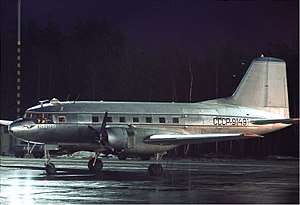
At the end of World War II, the Soviet government went about repairing and rebuilding essential airport infrastructure, and it strengthened the Aeroflot units in the European part of the Soviet Union. Aeroflot had by the end of 1945 carried 537,000 passengers, compared with 359,000 in 1940.[15]:16 The government made it a priority in the immediate postwar years to expand services from Moscow to the capital of the Union republics, in addition to important industrial centres on the country. To enable this, the government transferred to Aeroflot a large number of Lisunov Li-2s, and they would become the backbone of the fleet.[15]:17 The Ilyushin Il-12 entered service on Aeroflot's all-Union scheduled routes on 22 August 1947, and supplemented already existing Li-2 services. The original Ilyushin Il-18 entered service around the same time as the Il-12, and was operated on routes from Moscow to Yakutsk, Khabarovsk, Vladivostok, Alma Ata, Tashkent, Sochi, Mineralnye Vody and Tbilisi. By 1950 the Il-18 was withdrawn from service, being replaced by Il-12s.[15]:18,20 MVL and general aviation services received a boost in March 1948, when the first Antonov An-2s were delivered and entered service in Central Russia. Development of MVL services over latter years was attributed to the An-2, which was operated by Aeroflot in all areas of the Soviet Union.[15]:20
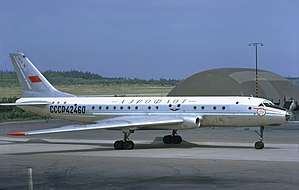
Aeroflot's route network had extended to 295,400 kilometres (183,600 mi) by 1950, and it carried 1,603,700 passengers, 151,070 tonnes (333,050,000 lb) of freight and 30,580 tonnes (67,420,000 lb) of mail during the same year. Night flights began in the same year, and the 5th Five-Year Plan, covering the period 1951–1955, emphasised Aeroflot expanding night-time operations, which vastly improved aircraft utilisation. By 1952, some 700 destinations around the Soviet Union received regular flights from Aeroflot.[15]:20 On 30 November 1954, the Ilyushin Il-14 entered service, and the aircraft took a leading role in the operation of Aeroflot's all-Union services. The number of passengers carried in 1955 increased to 2,500,000, whilst freight and mail carriage also increased, to 194,960 and 63,760 tons, respectively. By this time, Aeroflot's route network covered a distance of some 321,500 kilometres (199,800 mi).[15]:21 The 20th Communist Party Congress, held in 1956, saw plans for Aeroflot services to be dramatically increased. The airline would see its overall activities increased from its then current levels by 3.8 times, and it was set the target of the carriage of 16,000,000 passengers by 1960. In order to meet these goals, Aeroflot introduced higher capacity turbojet and turbine-prop aircraft on key domestic routes, and on services to Aeroflot destinations abroad. A major step for Aeroflot occurred on 15 September 1956 when the Tupolev Tu-104 jet airliner entered service on the Moscow-Omsk-Irkutsk route, marking the world's first sustained jet airline service. The airline began international flights with the type on 12 October 1956 under the command of Boris Bugayev with flights from Moscow to Prague. The aircraft placed Aeroflot in an enviable position, as airlines in the West had operated throughout the 1950s with large piston-engined aircraft.[15]:21[17]:44[18] By 1958 the route network covered 349,200 kilometres (217,000 mi), and the airline carried 8,231,500 passengers, and 445,600 tons of mail and freight, with fifteen percent of all-Union services being operated by jet aircraft.[15]:23
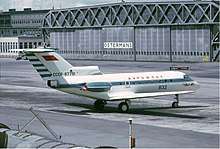
Aeroflot introduced the Antonov An-10 and Ilyushin Il-18 in 1959, and together with its existing jet aircraft, the airline was able to extend services on modern aircraft to twenty one cities during 1960.[15]:23 The Tupolev Tu-114, then the world's largest airliner, entered service with the Soviet carrier on 24 April 1961 on the Moscow-Khabarovsk route; covering a distance of 6,980 kilometres (4,340 mi) in 8 hours 20 minutes.[15]:24 The expansion of the Aeroflot fleet saw services with modern aircraft being extended to forty one cities in 1961, with fifty percent of all-Union services being operated by these aircraft. This fleet expansion also saw the number of passengers carried in 1961 skyrocketing to 21,800,000.[15]:24 Further expansion came in 1962 when both the Tupolev Tu-124 and Antonov An-24 entered regular service with Aeroflot on various medium and short-haul routes. By 1964, Aeroflot operated direct flights from Moscow to 100 cities, from Leningrad to 44 cities, and from Kiev to 38 cities. The airline also operated direct flights from Mineralnye Vody to 48 cities across the Soviet Union, denoting the importance of the operation of holiday aircraft services to Aeroflot.[15]:26 Statistics for the same year showed Aeroflot operating an all-Union route network extending over 400,000 kilometres (250,000 mi), and carrying 36,800,000 passengers.[15]:27
By 1966 Aeroflot carried 47,200,000 passengers over a domestic route network of 474,600 kilometres (294,900 mi). For the period of the 8th Five-Year Plan, which ran from 1966–1970, Aeroflot carried a total of 302,200,000 passengers, 6.47 billion tons of freight and 1.63 billion tons of mail.[15]:27 During the Five-Year Plan period, all-Union services were extended over an additional 350 routes; an additional 1,000 MVL routes were begun, and 40 new routes were opened up with all-cargo flights.[15]:27–28 The year 1967 saw the introduction into service of the Ilyushin Il-62 and Tupolev Tu-134, and in September 1968 the Yakovlev Yak-40 regional jet began operations on short-haul services. That same year, the Il-62 inaugurated the long-delayed service between Moscow and New York, which finally began in July and was operated by Aeroflot and Pam Am jointly. According to Mark Jones book 'The Aeroflot Story: From Russia With Luck': ″This business relationship would become an acrimonious affair in which both parties complained it had been wronged by the other. Pan Am accused the Soviets of illegally siphoning away Moscow-to-New York passengers, whilst in turn; Aeroflot accused US consular officials in Russia of having steered passengers to Pan Am flights. ″
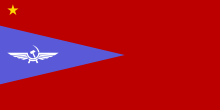
By 1970, the last year of the Five-Year Plan period, Aeroflot was operating flights to over 3,500 destinations in the Soviet Union, and at the height of the 1970 summer holidays season, the airline was carrying approximately 400,000 passengers per day, and some ninety percent of passengers were being carried on propeller-turbine and jet aircraft.[15]:28 In January 1971, the Central Administration of International Air Traffic (Russian: Центральное управление международных воздушных сообщений) (TsUMVS) was established within the framework of IATA, and became the sole enterprise authorised to operate international flights. Abroad, the airline was known as Aeroflot Soviet Airlines. In 1976, Aeroflot carried its 100 millionth passenger. Its flights were mainly concentrated around the Soviet Union, but the airline also had an international network covering five continents: North and South America, Europe, Africa and Asia. The network included countries such as the United States, Canada, United Kingdom, Spain, Cuba, Mexico and the People's Republic of China.[19]
Aeroflot service between the Soviet Union and the United States was interrupted from 15 September 1983 until 2 August 1990, following an executive order by U.S. President Ronald Reagan, revoking Aeroflot's license to operate flights into and out of the United States following the downing of Korean Air Lines Flight 007 by the Soviet Air Force. At the start of the 1990s Aeroflot reorganised again giving more autonomy to territorial divisions. REG Davies, former curator of the Smithsonian Institution, claims that by 1992 Aeroflot had over 600,000 people operating over 10,000 aircraft.[17]:92,94
Other functions
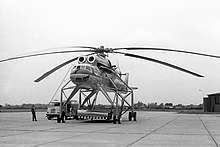
Aeroflot also performed other functions, including air ambulance; aerial application; heavy lifting for the Soviet Space Agency; offshore oil platform support; exploration and aeromagnetic survey for natural resources; support for construction projects; transport of military troops and supplies (as an adjunct to the Soviet Air Force); atmospheric research; and remote area patrol. It operated hundreds of helicopters and cargo aircraft in addition to civil airliners. It also operated the Soviet equivalent of a presidential aircraft and other VIP transports of government and Communist party officials.[7][17]:94 Aeroflot was also responsible for such services as ice patrol in the Arctic Ocean and escorting of ships through frozen seas; oil exploration; power line surveillance; and transportation and heavy lifting support on construction projects. For the latter tasks, Aeroflot used, in addition to smaller helicopters, the Mil Mi-10 flying crane capable of lifting 11,000 to 14,000 kilograms (24,000 to 31,000 lb). Hauling of heavy cargo, including vehicles, was performed by the world's largest operational helicopter, the Mil Mi-26. Its unusual eight-blade rotor enabled it to lift a maximum payload of some twenty tons.[7] The medium- and long-range passenger- and cargo aircraft of Aeroflot were also part of the strategic air transport reserve, ready to provide immediate airlift support to the armed forces. Short-range aircraft and helicopters were available for appropriate military support missions.
Post-Soviet Aeroflot

In the early 1990s, the Soviet Union underwent massive political upheavals, culminating in the dissolution of the State. Former republics of the Soviet Union declared their independence during January 1990 – December 1991, resulting in the establishment of several independent countries, along with fifteen republics and the Commonwealth of Independent States (CIS). Up until that time, Aeroflot had been the only establishment providing air services throughout the Soviet Union, but with its breakup Aeroflot branches of these countries began their own services, and the airline itself came under control of Russia, the largest of the CIS republics, and was renamed Aeroflot – Russian International Airlines (ARIA).[20][21][22] In 1992 Aeroflot was divided into a number of regional airlines,[23] whereas international routes were operated by ARIA.[22] Smaller regional airlines which emerged from the old Aeroflot were sometimes referred to as Babyflots;[20]:2 Bashkirian Airlines, Krasnoyarsk Airlines, Moscow Airways and Tatarstan Airlines were among the carriers that were formed from former Aeroflot directorates.[24]
In 1994, Aeroflot was registered as a joint-stock company and the government sold off 49% of its stake to Aeroflot employees. During the 1990s, Aeroflot was primarily focused on international flights from Moscow. However, by the end of the decade Aeroflot started an expansion in the domestic market. In 2000 the company name was changed to Aeroflot – Russian Airlines to reflect the change in the company strategy.[25] The Aeroflot fleet shrank dramatically in the post-Soviet era, dropping from 5,400 planes in 1991 to 115 in 1996.[26]
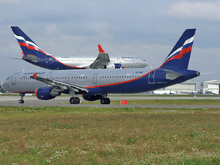
Since the dissolution, Aeroflot has been actively working towards promoting and redefining itself as a safe and reliable airline.[27] In the early 2000s, the airline hired British consultants for rebranding.[28] From the start, plans were afoot to replace the hammer and sickle logo, a symbol of Soviet communism; despite this the logo was not scrapped, as it was the most recognisable symbol of the company for over 70 years.[28] A new livery and uniforms for flight attendants were designed and a promotional campaign launched in 2003.[29] Its fleet has undergone a major reorganisation during which most of the Soviet aircraft were replaced by Western-built jets; concerns over fuel consumption rather than safety concerns were cited for such a move.[30] Airbus A319s and A320s for short-haul flights in Europe; and Boeing 767s and Airbus A330s for long-haul routes; were gradually incorporated into the fleet. In the spring of 2004 an expansion on the domestic market was undertaken, aiming to gain 30% share by 2010 (as of 2006 it held approximately 9%). The first task was to outperform Siberia Airlines (now S7 Airlines), a major rival and the leader in the domestic market. On 29 July 2004 a new corporate slogan was adopted: "Sincerely Yours. Aeroflot".[31]
In April 2006,[32] Aeroflot became the tenth airline to join SkyTeam,[33] and the first air carrier in the former Soviet Union to do so.[34] The company announced its plan to increase cargo operations. It registered the Aeroflot-Cargo trademark in 2006.[35] During that year Aeroflot carried 7,290,000 passengers and 145,300 tons of mail and cargo[36] to 89 destinations in 47 countries.[37] It saw improvements in its earnings and number of passengers carried. The net profit reached $309.4 million (RUB 7.98 billion) in 2006, a 32.3% increase from 2005 earnings of only $234 million (RUB6.03 billion). The revenue for the same 2005–2006 period rose by 13.5% to reach $2.77 billion with an 8.7% gain in passenger numbers.[38] Aeroflot became the sole shareholder of Donavia—a domestic airline then-named Aeroflot-Don—in December 2006, when it boosted its stake in the company from 51% to 100%;[40] soon afterwards, Aeroflot-Nord was created following the buyout of Arkhangelsk Airlines.[41] At March 2007, Aeroflot was owned by the Russian Government via Rosimushchestvo (51.17%), National Reserve Corporation (27%) and employees and others (19%), and had 14,900 employees.[42]
.jpg)
.jpg)
In February 2010, the Russian government announced that all regional airlines owned by the state through the holding company Rostechnologii would be consolidated with the national carrier Aeroflot in order to increase the airlines' financial viability.[44] The merger was completed in late November 2011 in a deal worth US$81 million, Aeroflot's sister company Aeroflot-Finance became the major shareholder of Vladivostok Avia, Saravia and Rossiya Airlines, and the sole shareholder of both SAT Airlines and Orenair.[45] It was reported in January 2012 that Saravia was sold to private investors, as the recent-acquired regional airline was not in line with Aeroflot's business strategy.[46] It was reported in June 2013 that in the third quarter of the same year Aeroflot would combine its subsidiaries Vladivostok Air and SAT Airlines into a new subsidiary regional carrier based in the Russian Far East.[47] The subsidiary was effectively created in September 2013 and was originally named Taiga Airline before later being renamed Aurora Airline.[48][49] The new company, 51%-owned by Aeroflot, was expected to link Moscow with the Russian Far East, whereas SAT Airlines and Vladivostok Avia were expected to cease operations in early 2014.[50]
In June 2013, during the World Airline Awards which took place at the 50th Le Bourget air show, Aeroflot was awarded the international prize as the best air carrier in Eastern Europe.[51] In October, the company introduced an affiliated low-cost carrier (LCC), Dobrolet.[52][53] The LCC started operations in June 2014;[54] they ceased on 4 August 2014 owing to EU sanctions over the airline launching flights to Crimea.[55][56] In late August 2014, Aeroflot announced the launch of a new LCC in October 2014 to replace Dobrolet; it would use aircraft transferred from Orenair.[57] The new LCC, named Pobeda, started operations from Vnukovo Airport in December 2014;[58][59] it had plans to fly to Belgorod, Kazan, Perm, Samara, Surgut, Tyumen, Ufa, Volgograd and Yekaterinburg.[60]
In March 2014 as a response to 2014 Ukrainian revolution the company announced rerouting their flights to avoid flying over the territory of Ukraine. The announcement (together with worse than expected financial results) caused an almost 10% drop in the share price of the company.[61][62] Also in March 2014, Aeroflot's flight designator ″SU″ was adopted by its subsidiary Rossiya.[43] In September 2015, Aeroflot agreed to acquire 75% of Transaero Airlines for the symbolic price of one ruble,[63] but abandoned the plan later after failing to come to terms on a takeover.[64] The carrier did take over a number of Transaero's aircraft by assuming its leases after the defunct airline's collapse. This introduced the Boeing 747 and Boeing 777 to Aeroflot's fleet. In addition, the company suggested that it would cancel some of its jet orders as a result of the newly assumed aircraft.[65]
Following a prior announcement, Aeroflot's subsidiaries Rossiya Airlines, Donavia and Orenair combined their operations in late March 2016. Orenair's AOC was cancelled by Russian authorities in late May 2016.[67] Aeroflot filed both Donavia and Orenair for bankruptcy in January 2017. Orenair and Donavia were formally declared bankrupt in February 2017 and August 2017, respectively.
Corporate affairs
Headquarters
The headquarters of Aeroflot are in Arbat District, Central Administrative Okrug, Moscow.[69] By 2009 Aeroflot began leasing 7,000 square metres (75,000 sq ft) of space from a class A office building on Arbat Street owned by Midland Development. As of that year Aeroflot had plans to build a dedicated 35,000-square-metre (380,000 sq ft) headquarters in proximity to Sheremetyevo Airport.[70]
Key people
As of December 2014, Aeroflot's CEO position is held by Vitaly Savelyev.[58] Savelyev was appointed on 10 April 2009 and succeeded Valery Okulov. Expiring in April 2014, The Russian government extended Savelyev's appointment for another five years.[71] In late August 2018, Savelyev was re-confirmed in the CEO position for a further five-year period.[72] In December 2018, the Russian government appointed Russia's Minister of Transport Evgeny Ditrich as chairman of the board.[73]
Ownership and subsidiaries
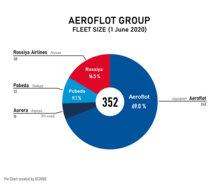
As of December 2013, Aeroflot was 51% state-owned.[74] The Aeroflot Group, Russia's largest airline holding company, included several subsidiaries: Pobeda, Rossiya, Donavia, Orenair, and Aurora.[75] At that time, the Aeroflot Group employed 30,328; 17,678 of these people worked for Aeroflot JSC.[76]
Aeroflot Airline carried 35.8 million passengers during 2018, an 8.9% increase year-on-year (YOY). The Aeroflot Group, comprising Aeroflot Airline, Aurora, Pobeda and Rossiya, carried 55.7 million passengers during the same period, 11% up YOY. At December 2018, the Group fleet totalled 366 aircraft, of which 253 corresponded to Aeroflot Airline.[77]
Staffing
In 2016 the company decided to link the pay of its flight attendants to their dress size. All the flight attendants were photographed and measured, and some were weighed. Women above a Russian size 48 were barred from international flights.[78] According to the flight attendants' trade union the policy affected about 600 Aeroflot attendants. The company successfully defended itself in court in April 2017 by saying that a survey of Aeroflot passengers showed that "92% want to see stewardesses who fit into the clothes sizes we are talking about here"[79] and that every extra kilogramme meant spending an extra 800 roubles per year on fuel.[80] The company denied all the accusations of discrimination.[81] In September 2017 the appeal court decided that requirements banning employment by women who wore large sizes was unenforceable and ordered compensation for Yevgenia Magurina, a flight attendant who filed a discrimination suit.[82] Two women were awarded token compensation, but the court did not rule explicitly that the policy was discriminatory.[83]
In November 2018, the company's executive director Vitaly Savelyev signed new rules, according to which employees of the Moscow office of the airline were forbidden to bring and use smartphones at work.[84]
Destinations
As of September 2018, Aeroflot served 146 destinations in 52 countries.[5]
Alliances
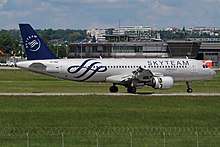
Aeroflot is a member of SkyTeam,[33][34] first signing a Memorandum of Understanding (MoU) on 24 May 2004 and becoming a full member in April 2006.[85][86] Although Aeroflot did not meet the conventional standards of the alliance at the time, SkyTeam saw potential in the airline's large hub networks and decided that it made up for the airline's deficiencies.[87] Aeroflot's cargo branch, Aeroflot-Cargo, which was later reintegrated into the parent company, operated as part of SkyTeam Cargo.[88]
Codeshare agreements
As of October 2019, Aeroflot has codeshare agreements with the following airlines:
- Aerolíneas Argentinas
- Aeroméxico[91][92]
- Air Europa
- Air France
- Air Malta
- Air Serbia
- airBaltic
- Alitalia
- Aurora
- Bangkok Airways[93]
- Bulgaria Air
- China Eastern Airlines
- China Southern Airlines[94]
- Czech Airlines
- Delta Air Lines
- Finnair
- Garuda Indonesia
- Icelandair
- Japan Airlines[95]
- Kenya Airways
- KLM
- Korean Air[96]
- LOT Polish Airlines[97]
- MIAT Mongolian Airlines
- Rossiya Airlines
- S7 Airlines
- Saudia
- TAROM
- Vietnam Airlines[98][99][100]
Fleet
The Aeroflot passenger fleet consists of narrow-body and wide-body aircraft from seven aircraft families: the Airbus A320, the Airbus A321, the Airbus A330, the Airbus A350 XWB, the Boeing 737, the Boeing 777, and the Sukhoi Superjet 100. As of March 2020, there are 247 passenger aircraft registered in the Aeroflot fleet.[101]
Frequent flyer programme

Aeroflot uses Aeroflot Bonus as their frequent-flyer programme. It has three levels:[102]
| Level | Benefits | Requirements | SkyTeam status |
|---|---|---|---|
| Regular |
|
Travelers can start their participation in Aeroflot Bonus Programme from the age of 2 (Aeroflot Junior) | – |
| Silver |
|
25,000 miles (40,000 km) or 25 flight segments during calendar year |
Elite |
| Gold |
|
50,000 miles (80,000 km) or 50 flight segments during calendar year |
Elite Plus |
Sponsorship and promotion agreements
As of July 2013, Aeroflot is the official carrier of Manchester United.[104] The agreement is the first ever sponsorship Manchester United has signed with a Russian company.[105]
Accidents and incidents
References
![]()
- "Company News - Rossiya Airlines, Aeroflot Group's Newly Merged Regional Carrier, Begins Flights - Aeroflot".
- https://www.xe.com/currencyconverter/convert/?Amount=533000000000&From=RUB&To=EUR
- Montag-Girmes, Polina (1 March 2018). "Higher fuel prices contribute to Aeroflot Group's 41% net profit loss in 2017". Air Transport World. Archived from the original on 5 March 2018.
- Blachly, Linda (5 December 2017). "Aircraft Briefs-Dec. 5, 2017". Air Transport World. Archived from the original on 2 January 2018.
AviaAM Leasing handed in two new Airbus A320s to Russian flag carrier Aeroflot.
- Hofmann, Kurt (10 September 2018). "Vietnam Airlines, Aeroflot to expand cooperation". Air Transport World. Archived from the original on 17 September 2018. Retrieved 17 September 2018.
- Blachly, Linda (1 September 2015). "Russia's Aeroflot to acquire Transaero Airlines". Air Transport World. Archived from the original on 2 September 2015.
Russia’s largest airline, Aeroflot, will acquire Transaero Airlines, according to a Transaero statement.
- "Soviet Union". Lcweb2.loc.gov. Retrieved 12 July 2011.
- Smith, Patrick (9 March 2004). "Ask the pilot". Salon.com. Archived from the original on 16 October 2007. Retrieved 21 August 2007.
- "History of Aeroflot--Russian International Airlines – FundingUniverse". www.fundinguniverse.com. Retrieved 9 March 2020.
- Ideas, KMP (7 February 2018). "Aeroflot: A Very Interesting 2018". Seeking Alpha.
- ES (4 March 2020). "Aeroflot Group is expecting the delivery of 55 new aircraft this year". Russian Aviation Insider. Retrieved 9 March 2020.
- Aeroflot-Cargo Aircraft Performed Today The First Flight Under Its Flag Archived 2007-09-28 at the Wayback Machine
- "Cargo branch of Russian Aeroflot goes bankrupt / MosNews.com". archive.is. 4 June 2011. Retrieved 9 March 2020.
- "Shareholder Capital Structure | Aeroflot". ir.aeroflot.com. Retrieved 9 March 2020.
- MacDonald, Hugh (1975). Aeroflot: Soviet air transport since 1923. Putnam. ISBN 978-0-370-00117-3.
- Малютина, Наталья. "Крылья Советов: история бренда "Аэрофлот"". Информационно-аналитический портал Sostav.ru. Retrieved 1 January 2017.
- Davies, R.E.G. (1992). Aeroflot: An Airline and Its Aircraft (First ed.). Rockville, Maryland: Paladwr Press. ISBN 978-0-9626483-1-1.
- "Three questions to Boris Bugayev, the Minister of Civil Aviation of the USSR". Aeroflot '71. Aviareklama. 1971. p. 3.
- "Aeroflot - Russian airline".
- Stanley, Alessandra (29 June 1997). "Hold the Jokes, Please: Aeroflot Buffs Its Image". The New York Times. Archived from the original on 20 June 2014.
-
- Erlanger, Steven (4 December 1994). "With 400 Pieces, Aeroflot Is a Passenger Puzzle (page 1 of 2)". The New York Times. Archived from the original on 5 September 2012. Retrieved 5 September 2012.
- Erlanger, Steven (4 December 1994). "With 400 Pieces, Aeroflot Is a Passenger Puzzle (page 2 of 2)". The New York Times. Archived from the original on 5 September 2012. Retrieved 5 September 2012.
-
- "World Airline Directory—Aeroflot – Russian International Airlines (page 42)". Flight International: 42, 44. 24–30 March 1993. Archived from the original on 7 June 2012. Retrieved 18 October 2012.
- "World Airline Directory—Aeroflot – Russian International Airlines (page 44)". Flight International. Archived from the original on 7 June 2012. Retrieved 18 October 2012.
-
- "The Bullish Bear (page 20)". Flight International: 20–23. 8–14 April 1992. Archived from the original on 19 October 2012. Retrieved 18 October 2012.
- "The Bullish Bear (page 21)". Flight International. Archived from the original on 19 October 2012. Retrieved 18 October 2012.
- "The Bullish Bear (page 22)". Flight International. Archived from the original on 19 October 2012. Retrieved 18 October 2012.
- "The Bullish Bear (page 23)". Flight International. Archived from the original on 19 October 2012. Retrieved 18 October 2012.
-
- "All Change at Aeroflot (page 47)". Flight International: 47–48. 20–26 October 1993. Archived from the original on 19 October 2012. Retrieved 18 October 2012.
- "All Change at Aeroflot (page 48)". Flight International. Archived from the original on 19 October 2012. Retrieved 18 October 2012.
- Aeroflot official website Archived 21 November 2008 at the Wayback Machine
- Stanley, Alessandra (29 June 1997). "Hold the Jokes, Please: Aeroflot Buffs Its Image". The New York Times.
-
- Wines, Michael (7 April 2003). "A Face-Lift for Down-at-Heel Aeroflot (page 1 of 3)". The New York Times. Archived from the original on 10 September 2012. Retrieved 9 September 2012.
- Wines, Michael (7 April 2003). "A Face-Lift for Down-at-Heel Aeroflot (page 2 of 3)". The New York Times. Archived from the original on 10 September 2012. Retrieved 9 September 2012.
- Wines, Michael (7 April 2003). "A Face-Lift for Down-at-Heel Aeroflot (page 3 of 3)". The New York Times. Archived from the original on 10 September 2012. Retrieved 9 September 2012.
- "No more service with a scowl". BBC News. 29 April 2003. Archived from the original on 20 March 2012. Retrieved 9 September 2012.
- "Aeroflot Sticks By Hammer and Sickle". The Moscow Times.
- Kramer, Andrew E. (28 July 2009). "Aeroflot Sheds Its Soviet Legacy and Turns to a Western Fleet". The New York Times. Archived from the original on 5 September 2012. Retrieved 9 September 2012.
- "Aeroflot new slogan". Aeroflot. 29 July 2004. Archived from the original on 20 June 2014.
- "Aeroflot joins SkyTeam". Air Transport World. 17 April 2006. Archived from the original on 6 June 2012. Retrieved 1 September 2012.
- "Aeroflot Becomes 10th Airline to Join SkyTeam". The Moscow Times. 17 April 2006. Archived from the original on 20 June 2014.
- "Russia's Aeroflot Ranked Close to World Best Airlines". Kommersant. 7 August 2007. Archived from the original on 14 October 2012.
- Russian Aeroflot-Cargo official website Archived 21 March 2008 at the Wayback Machine
- Aeroflot – Press releases (24 January 2007). "Aeroflot Board of Directors Summarised The Business Results For 2006". Department of Public Relations. Archived from the original on 28 September 2007. Retrieved 23 April 2007.
- Aeroflot – Press releases (14 March 2007). "Aeroflot has received one more new A320 airliner" (in Russian). Department of Public Relations. Archived from the original on 28 September 2007. Retrieved 23 April 2007.
- Airfinance Journal (11 May 2007). "Aeroflot Increases Earnings". Retrieved 10 June 2007.(subscription required)
- "Other News – 01/12/2007". Air Transport World. 15 January 2007. Archived from the original on 16 June 2012. Retrieved 7 September 2012.
- Endres, Günter (19 February 2007). "Arranged marriages: Russia focus". London: Flightglobal.com. Airline Business. Archived from the original on 23 May 2013. Retrieved 7 September 2012.
It has created Aeroflot-Don at Rostov in the south by taking over Donavia, acquiring full control in December 2006, and then setting up Aeroflot-Nord in the north by acquiring the assets of Arkhangelsk Airlines.
- "Directory: World Airlines". Flight International. 3 April 2007. p. 47.
- Montag-Girmes, Polina (23 July 2015). "Russia's Rossiya Airlines names new chairman". Air Transport World. Archived from the original on 26 July 2015.
- "Russia to corporatize Rossiya air carrier, merge with Aeroflot | Business | RIA Novosti". En.rian.ru. Archived from the original on 6 June 2011. Retrieved 12 July 2011.
- Borodina, Polina (22 November 2011). "Russia's Rostechnology finalizes transfer of five regional carriers to Aeroflot". Air Transport World. Archived from the original on 16 June 2012. Retrieved 9 September 2012.
- Borodina, Polina (2 January 2012). "Aeroflot sells regional subsidiary". Air Transport World. Archived from the original on 11 November 2012.
- Borodina, Polina (13 June 2013). "Aeroflot to launch Far East subsidiary in 3Q". Air Transport World. Archived from the original on 30 October 2013.
- Borodina, Polina (25 October 2013). "Aeroflot provides a $13.5 million loan for Far East subsidiary". Air Transport World. Archived from the original on 30 October 2013.
- Borodina, Polina (10 September 2013). "Russia's Aeroflot creates Far East subsidiary Taiga Airline". Air Transport World. Archived from the original on 21 September 2013.
- Borodina, Polina (6 November 2013). "Aeroflot subsidiary Aurora Airline set to launch operations". Air Transport World. Archived from the original on 7 November 2013.
- "Aeroflot recognized as best air carrier in Eastern Europe". Itar-Tass. 18 June 2013. Archived from the original on 20 June 2014.
- "Aeroflot Introduces New Low-Cost Airline – Dobrolet" (Press release). Aeroflot. 10 October 2013. Archived from the original on 28 October 2013.
- "Aeroflot Introduces New Low-Cost Airline – Dobrolet". Centre for Aviation. 11 October 2013. Archived from the original on 10 June 2014.
- Borodina, Polina (10 June 2014). "Aeroflot subsidiary Dobrolet launches flights". Air Transport World. Archived from the original on 10 June 2014.
- Borodina, Polina (4 August 2014). "Russia's Dobrolet ceases operations due to EU sanctions". Air Transport World. Archived from the original on 27 August 2014.
- Kaminski-Morrow, David (3 August 2014). "Dobrolet halts flights as EU sanctions block jet lease". Flightglobal. London. Archived from the original on 27 August 2014.
- Borodina, Polina (26 August 2014). "Aeroflot to launch new LCC subsidiary". Air Transport World. Archived from the original on 27 August 2014.
- "Aeroflot acts to relaunch its LCC project with Pobeda after Group profits fell again in 3Q2014". CAPA Centre for Aviation. 3 December 2014. Archived from the original on 3 December 2014.
- Borodina, Polina (1 December 2014). "Aeroflot subsidiary Pobeda launches flights". Air Transport World. Archived from the original on 2 December 2014.
- Borodina, Polina (16 October 2014). "New Aeroflot budget carrier discloses network". Air Transport World. Archived from the original on 18 October 2014.
- "Отказ летать над Украиной мог стать причиной падения акций "Аэрофлота" на 9,8%". Novaya Gazeta. 13 March 2014.
- "Акции "Аэрофлота" упали на 9,8% до 52,8 рубля за бумагу по итогам торгов на Московской бирже". ITAR-TASS. 13 March 2014.
- "Aeroflot to Buy Transaero in Tie-Up of Russia's Biggest Airlines". Bloomberg. 1 September 2015.
- Soldatkin, Vladimir (1 October 2015). "Russia's Aeroflot says drops plans to acquire Transaero [Update 1]". Reuters. Retrieved 15 December 2015.
- Jasper, Christopher; Pronina, Lyubov (14 April 2016). "Aeroflot's Transaero Jet-Rush to Crimp Airbus, Boeing Orders". Bloomberg. Retrieved 19 August 2016.
- "Procurement Notice." Aeroflot. Retrieved 25 April 2014. "119002, Moscow, Arbat Street 10"
- "Aeroflot renting luxury office in Arbat Street" (Archive). PMR Ltd. 19 July 2009. Retrieved 25 April 2014.
- Borodina, Polina (18 September 2013). "Saveliev to lead Aeroflot for next five years". Air Transport World. Archived from the original on 21 September 2013.
- Montag-Girmes, Polina (29 August 2018). "Savelyev re-elected as Aeroflot CEO". Air Transport World. Archived from the original on 13 September 2018. Retrieved 13 September 2018.
- Polina Montag-Girmes, Polina Montag-Girmes (12 December 2018). "Aeroflot Group makes management changes". Air Transport World. Archived from the original on 30 December 2018.
- "Shareholder Structure". Aeroflot. Archived from the original on 3 November 2014.
- "Company Profile: Our alliance and partnerships". Aeroflot. Retrieved 3 November 2014.
- "Aeroflot: strong profit growth in 9M2013. LCC subsidiary Dobrolet complements the team in early 2014". Centre for Aviation. 10 December 2013. Archived from the original on 3 April 2015.
- Montag-Girmes, Polina (30 January 2019). "Aeroflot Group traffic up 11% in 2018". Air Transport World. Archived from the original on 4 February 2019. Retrieved 6 February 2019.
- "'Too fat to fly': Russian women fight job discrimination". BBC News. 14 September 2017. Retrieved 14 September 2017.
- "Passengers don't want overweight flight crew, say Aeroflot officials after lawsuits". Guardian. 25 April 2017. Retrieved 14 September 2017.
- "Aeroflot flight attendants lose discrimination case after being branded 'old, fat and ugly'". Independent. 21 April 2017. Retrieved 14 September 2017.
- "Aeroflot comments on accusations of discrimination against staff". Aeroflot. 22 February 2017. Retrieved 14 September 2017.
- "Russian Flight Attendants Win Aeroflot Discrimination Case". Moscow Times. 6 September 2017. Retrieved 14 September 2017.
- "Russian Aeroflot flight attendants win uniform discrimination case". DW. 7 September 2017. Retrieved 14 September 2017.
- "Airline cancels passenger's elite membership over 'insulting' tweet". The Independent. 26 November 2018. Retrieved 17 October 2019.
- "SkyTeam Signs MOU With Aeroflot; Agreement preliminary step in new member joining process" (Press release). SkyTeam. 24 May 2004. Archived from the original on 6 January 2010. Retrieved 8 March 2015.CS1 maint: unfit url (link)
- "Aeroflot plans to join SkyTeam alliance". Atlanta Business Chronicles. 24 May 2004. Archived from the original on 11 August 2014. Retrieved 28 June 2012.
- "Aeroflot eyes Sky Team membership". BBC News. 29 January 2004. Archived from the original on 2 April 2015. Retrieved 28 June 2012.
- "Aeroflot Cargo". www.skyteam.com. Retrieved 9 March 2020.
- Liu, Jim (21 December 2019). "Aeroflot / AeroMexico begins codeshare partnership from late-Dec 2018". Routesonline. Retrieved 11 January 2019.
- Liu, Jim (26 April 2019). "Aeroflot / AeroMexico expands codeshare network from April 2019". Routesonline. Retrieved 26 April 2019.
- Liu, Jim (25 April 2019). "Aeroflot expands Bangkok Airways codeshare to Vietnam from April 2019". Routesonline. Retrieved 25 April 2019.
- Liu, Jim (20 July 2018). "China Southern expands Aeroflot European codeshare network from July 2018". Routesonline. Retrieved 20 July 2018.
- "JAL Group - PRESS RELEASES - Aeroflot and Japan Airlines Agree on Codeshare Partnership". press.jal.co.jp. 10 February 2020. Retrieved 14 February 2020.
- Liu, Jim (16 July 2018). "Correction: Korean Air / Aeroflot extends codeshare partnership from July 2018". Routesonline. Retrieved 16 July 2018.
- Liu, Jim (8 July 2019). "Aeroflot / LOT Polish expands codeshare network from July 2019". Routesonline. Retrieved 8 July 2019.
- "Aeroflot and Vietnam Airlines start code-share programme". RusAviaInsider. 13 June 2019.
- "Aeroflot Launches Codeshare Partnership with Vietnam Airlines". RusAviaInsider. 13 June 2019.
- Liu, Jim (26 June 2019). "Aeroflot / Vietnam Airlines begins codeshare partnership from June 2019". Routesonline. Retrieved 26 June 2019.
- "Aeroflot | Доступ заблокирован". www.aeroflot.ru. Retrieved 7 March 2020.
- Aeroflot Bonus levels Aeroflot Bonus web-site
- "Comfort Plus service". Aeroflot. Archived from the original on 13 July 2011. Retrieved 12 July 2011.
-
- "Aeroflot come on board (page 1 of 2)" (Press release). Manchester United Ltd. 8 July 2013. Archived from the original on 9 July 2013.
- "Aeroflot come on board (page 2 of 2)" (Press release). Archived from the original on 9 July 2013.
- Weir, Keith (8 July 2013). "Manchester United makes Aeroflot its first Russian sponsor". Reuters. Manchester. Archived from the original on 9 July 2013.
Bibliography
- Jones, Mark (2018). The Aeroflot Story: From Russia With Luck. Chronik Europa. ISBN 978-1981094714.
- Davies, R.E.G. (1992). Aeroflot: An Airline and Its Aircraft (1st ed.). Rockville, Maryland: Paladwr Press. ISBN 978-0-9626483-1-1.
- MacDonald, Hugh (1975). Aeroflot: Soviet air transport since 1923. Putnam. ISBN 978-0-370-00117-3.
External links
| Wikimedia Commons has media related to Aeroflot. |
- Official website (in Russian and English)